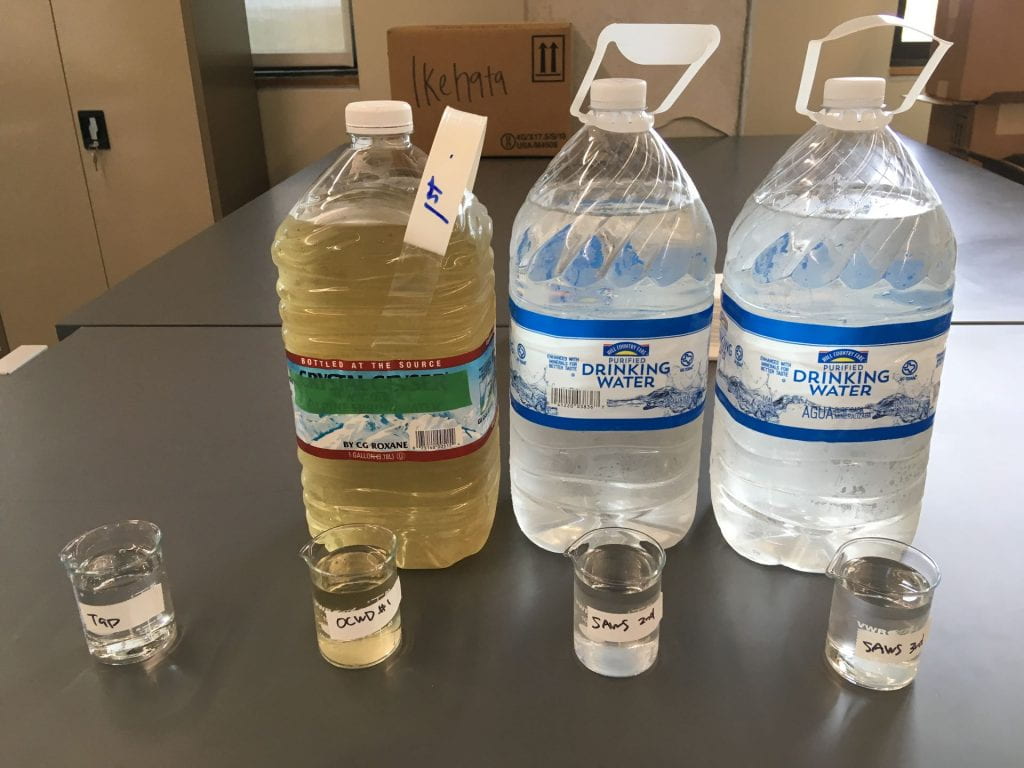Due to prolonged drought and rapid population growth, water shortage is one of the major economic challenges that the humanity is facing in the 21st century. In order to secure more local water resources and to expand their water portfolios, water suppliers, as well as industries and agriculture in many regions of the United States and around the world are exploring more and more unconventional water resources, such as brackish groundwater, seawater, storm water, and treated sewage effluent (i.e., reclaimed water). In order to treat unconventional water resources, such as brackish groundwater, reclaimed water, and seawater, which contains high levels of undesirable constituents, such as salinity, nutrients, metals, and trace and bulk organics, reverse osmosis (RO) is often employed. While the RO process produces 75% to 85% of almost readily drinkable water at advanced water purification facilities (AWPFs) and brackish groundwater desalination facilities (BGDFs), 15% to 25% of the feed water becomes waste stream called concentrate or brine, which needs to be properly disposed of.
Brine management is a critical issue in RO-based water reuse and desalination projects and has been a major obstacle for inland projects where the availability of disposal methods is limited. In order to reduce the volume of brine and improve water recovery, an additional stage of RO process can be added. However, serious scaling due to the presence of inorganic scalants, including silica, phosphate, and hardness metals, becomes a major problem. Moreover, since the RO process is a physical separation of dissolved constituents from water, the separated constituents, including both inorganics (e.g., metals, nutrients) and organics compounds [e.g., pharmaceuticals and personal care products (PPCPs), disinfection byproducts], becomes concentrated in the brine stream and may pose serious environmental impacts on the receiving water. Besides, the brine stream from AWPFs and BGDFs still represents a usable water resource because its salinity is typically below 10,000 mg/L, which is less than one third of seawater salinity (~35,000 mg/L). (Note: Seawater desalination may yield at least 50% of freshwater.) Therefore, additional desalination of the RO brine is feasible in terms of the salinity and osmotic pressure, if the scalants can be removed.
Recently, a new photobiological treatment method for RO concentrate has been developed to enable more water recovery using the secondary RO. This process utilizes the biology of diatoms, a class of photosynthetic microalgae that has silica-containing cell walls, and natural sunlight to remove silica, nutrients, and calcium carbonate from primary RO concentrate. Since diatom cells are enclosed by a rigid structure made of silicon dioxide (SiO2), this type of microorganisms requires aqueous silica, nutrients (nitrate/ammonia and phosphate) and inorganic carbon for growth and cell division. The previous studies have demonstrated rapid removal of silica, orthophosphate, and ammonia and nitrate, as well as calcium carbonate, from RO concentrate samples from more than 10 AWPFs and BGDFs in California, Arizona, New Mexico, and Texas. Preliminary experiments on the secondary RO of photobiologically treated RO concentrate showed 92% to 95% overall permeate recovery.
We are currently conducting bench- and pilot-scale experiments using RO concentrate samples collected from 6 different full-scale RO facilities in our laboratory to further advance the research on this novel treatment process.
Selected Publications
- Ikehata, K., Zhao, Y., Kulkarni, H. V., Li, Y. (2019) Treatment of RO concentrate from six potable reuse facilities in the southwestern U.S. with a new photobiological process. Water Supply 19:6, 1661-1667, https://doi.org/10.2166/ws.2019.040.
- Kulkarni, H., Zhao, Y., and Ikehata, K. (2019) Factors influencing photobiological treatment process to remove reactive silica from brackish groundwater reverse osmosis concentrate. Desalination 452, 114-122, DOI: 10.1016/j.desal.2018.11.009.
- Ikehata, K., Zhao, Y., Kulkarni, H.V., Li, Y., Snyder, S.A., Ishida, K.P., Anderson, M.A. (2018) Water recovery from advanced water purification facility reverse osmosis concentrate by photobiological treatment followed by secondary reverse osmosis. Environmental Science & Technology 52:12, 8588-8595, DOI: 10.1021/acs.est.8b00951.
- Ikehata, K., Zhao, Y., Ma, J., Komor, A.T., Maleky, N., and Anderson, M.A. (2018) A novel photobiological process for reverse osmosis concentrate treatment using brackish water diatoms. Water Science and Technology: Water Supply 18:2, 594-602, DOI: 10.2166/ws.2017.142.
- Ikehata, K., Zhao, Y., Maleky, N., Komor, A.T., and Anderson, M.A. (2017) Aqueous silica removal from agricultural drainage water and reverse osmosis concentrate by brackish water diatoms in semi-batch photobioreactors. Journal of Applied Phycology 29:1, 223-233, DOI 10.1007/s10811-016-0907-3.







